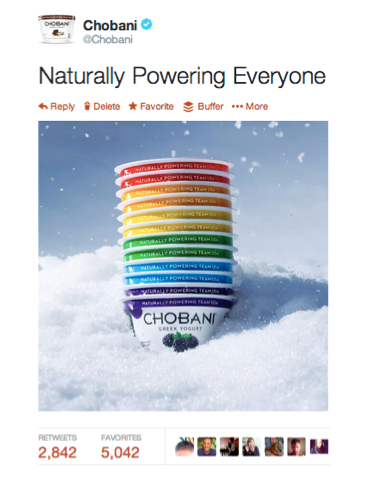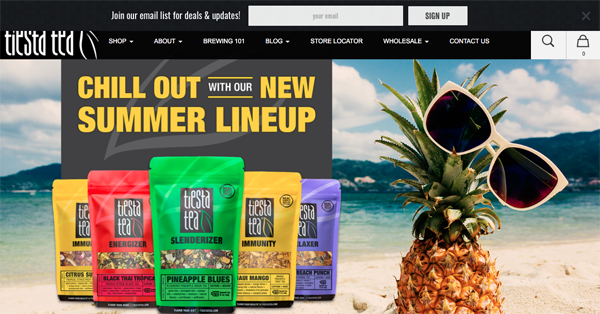CGSM Recap: The Rules of Digital Engagement
Any attendees of the 2017 Consumer Goods Sales & Marketing Summit who were still a little unclear about the critical importance of digital engagement may have left a little shell-shocked. But attendees who came to this year's conference looking for strategic inspiration and tactical ideas left fully armed with both.
The 14th annual CGSM Summit was themed around "Driving Digital Engagement," and most of the industry leaders who took the stage during the event made one point quite clear: Consumer goods companies that haven't already adopted digital communication as a key pillar of their sales and marketing strategies have already fallen behind.
"This not an inflection point; we've been inflected. It's not a disruption point, we've been disrupted," said Wendy Liebmann, chief executive officer and chief shopper at WSL Strategic Retail, in her kickoff keynote address.
"Digital is everything. It's the new norm," concluded Peter McGuinness, chief marketing & brand officer for Chobani, who followed Liebmann to the podium on the event's first morning and returned that evening to accept CGT's "CMO of the Year" award for 2017. Even traditional media is often consumer through digital channels, he noted, advising marketers to stop pitting various forms against each other.
But despite the urgency, companies must avoid the temptation to hastily adopt popular digital tools without understanding both the consumer behavior that's driving their use and the benefits they might derive for their brands. As Karenann Terrell, former chief information officer for Walmart, put it, "Digital starts with, 'Why?'"
Perhaps the strongest takeaway from this year's event is that digital technology is the ultimate enabler, the vehicle through which brands can better:
- understand consumers, because of the unprecedented amount of behavior data that can be collected and analyzed.
- engage with consumers, because of the unparalleled ability to directly reach consumers as individuals that it provides.
The following article presents a rundown of some agenda highlights from this year's event.
The key to success in the digital world isn't through disrupting shoppers, but by enabling them by providing the solutions they now want, according to Liebmann. While the consumer goods industry may be in turmoil, shoppers are not — in fact, they're very happy with the wealth of choices they now enjoy and the greater control they now command, she said.
New digital tools provide solutions to a range of "intractable" issues that have long bothered shoppers: Long trips to the store are eliminated through click & collect services; product uncertainty removed by pre-shopping online; long register lines skipped via self-checkout; replenishment issues solved through subscription services and immediate needs by same-day delivery, among others.
But brands can't just start leveraging these tools unless they first understand why shoppers are using them and how they can be best used to meet objectives. Shopper analytics can help identify the right tools to employ, she said.
Among Liebmann's examples of companies that are effectively addressing the new digital reality were Walmart, Starbucks, Sephora, online mattress retailer Casper and Amazon Go. She also singled out Stitch Fix, an online clothier that has taken the apparel market by storm. "Every single company is going to have to be a tech company if they want to survive," stated Stitch Fix founder Katrina Lake. "We are a fashion company, but what we are truly exceptional at is using technology and data science."
Yet Liebmann also cautioned consumer goods companies not to abandon traditional channels too quickly, because "Nothing is going away for a very long time." One case in point: Four out of 10 shoppers who use the click and collect option for their grocery shopping also go into the store when they pick up the order.
Having defined digital engagement as a strategic no-brainer, Chobani's McGuinness devoted his keynote talk to the need for brands to go beyond product attributes and usage benefits. “Modern brands must transcend the business they’re in” by taking a point of view about the world and engaging in a dialogue with consumers, he said. "Modern brands are porous — you have to let people in."

Chobani has done that through community outreach and social involvement that reflect the values of its founder, ceo Hamdi Ulukaya. The company's nine-year climb to the top of the yogurt category (No. 2 in the U.S. behind Dannon) was driven — in addition to delivering a great product — in part by its participation in the intensified cultural conversation that digital tools have fostered.
One phrase from McGuiness' talk that struck a particular chord with CGSM attendees (leading to multiple social media posts) was "Values are valuable."
A beneficial by-product of standing behind corporate values is the resulting media attention it can generate. "Earned media is a weapon," he explained. "While we're outspent (by larger players in the category), we don't want to be out-advertised. We're outspent, but we're not outgunned."
"I don't have to create perceptual difference, because there is real difference. I just have to figure out ways to tell it," McGuinness said later, when categorizing the "CMO of the Year" award as recognition of a full-company effort.
The crucial importance of shared data and collaborative planning was the primary takeaway of an all-star panel of CIOs moderated by Terrell and featuring Vittorio Cretella, CIO of Mars, Inc.; Jennifer Sepull, former CIO of Kimberly-Clark Corp.; Eduardo Siman, Director of Information Technology for Intradeco Apparel; and Andy Walter, retired vice president of IT & Shared Services for Procter & Gamble (and CGSM's honorary chairperson).
The group discussed the mutually beneficial business impact of Walmart's "CIO Council" a periodic gathering of leaders from Walmart's 40 top suppliers that Terrell convened during her five years as the retailer's CIO. The goal was to identify ways of sharing data and uncovering operational solutions that, ultimately, would drive business growth by better serving Walmart shoppers. The effort let the retailer be "part of a broader circle" rather than serving as the "hub" for its numerous supplier relationship "spokes."
The group was able to avoid the conflicts that might naturally come from bringing together suppliers with different objectives and agendas by concentrating on initiatives "that sold more product and drove down cost," Terrell said.
In addition to direct benefits generated through the Walmart business, participation on the council also fostered a greater appreciation for the importance of analytics at P&G, Walter noted.
The council also tackled the supply chain, where many CGs are still "using 30-year-old technology to track the most important piece of the organization's success," lamented Siman.
"Grocery is an experiential business," noted Suzy Monford, who until recently was CEO of Andronico's Community Markets, a Bay Area specialty-food chain that was acquired by Albertsons in early 2017. “Grocery retailing is undergoing the most significant changes in the industry’s history.”
Monford made the task of digital transformation seem almost simple by explaining how she turned around declining sales at Andronico's by deploying a pair of shopper-facing technologies that — and here's the important part — accurately tapping into emerging consumer needs.

Andronico's joined with Instacart on a hybrid business venture in which the third-party service handled its standard home delivery while Andronico's itself fulfilled orders for shoppers who wanted to click and collect at the store.
The chain also teamed with FitBank.Works, a mobile app (launched by Monford) that lets consumers log their workouts. The "Fitbank Fitness Challenge" had shoppers and Andronico's employees earning rewards for getting healthy. "I had to beat away CPG sponsors" for the various flights of the campaign, Monford said.
The grocery innovator also delivered one of the most shared quotes of the conference by admonishing consumer goods executives who might be reluctant to change their strategies to “Retire or get out of the way … Saddle Up!”
"It's not about the demographics, it's about the psychographics," recommended Michelle Harmon-Madsen, senior vice president of brand partnerships at online grocer FreshDirect. A Baby Boomer who acts like a millennial should be treated as a millennial, she advised. "Harmon-Madsen even suggested that the industry start referring to "consumers" more personally as "people" while running through a number of entertaining, engaging digital promotions that are delivering results for FreshDirect and its collaborative brand partners.

"Location is the 'cookie' for the physical world" because it's the one common element that cuts across all digital devices, said Asif Khan, founder and president of the Location Based Marketing Association, who noted that $52 billion will be spent on location-based infrastructure initiatives through 2019.
Since 85% of all data has a location element, location-based marketing is a critical element of consumer engagement, said Khan, who presented a bevy of impressive videos showcasing how location (when done tastefully) can really enhance the consumer experience. “There’s an opportunity to close the gap between social and location,” he advised.
But marketers need to recognize the fact that "Beacons are only worthwhile if someone is in the store," Khan said. That's why the association endorses a "three-layer location cake" of engagement that involves campaign elements to drive traffic to the store, increase basket size through ancillary promotions, and close the deal with a relevant offer.
A panel of industry experts convened to discuss CGT's 2017 Consumer Goods Sales & Marketing Report identified the major drivers of change in the industry: the need to improve consumer engagement, develop greater social awareness (a la Chobani), build more visibility into the supply chain, and flip the traditional consumer goods business model to start with the consumer and work backward.
Led by Simon Ellis program vp for supply chain at IDC Manufacturing Insights (and lead author of the report), the panel featured Blake Watts, consumer goods consulting partner for Wipro Ltd.; Michael Forhez, senior director of consumer markets for the Oracle Industry Solutions Group; Spencer Millerberg, CEO and founder of One Click Retail; and Tony Galli, business consultant for retail and consumer products at HCL America.
Improving consumer engagement requires organizations to drop many of the practices that, over the years, have driven operational efficiencies but may have distanced brands from consumers. "We've gotten so big that we've forgotten why we're in the business," chided Forhez, who also suggested that trade promotion needs to "move from 'optimization' to 'conversation' by going beyond the standard practice of simply worrying about "how much you have to spend to make your numbers."
Among best practices, Millerberg noted that many of the top-performing companies have established an E-Commerce Center of Excellence to build digital sales capabilities. He also echoed Harmon-Madsen's suggestion that relying on consumer demographics is no longer sufficient.
Any attendees who may have remained unmotivated by the end of CGSM's first day would almost certainly have been inspired by the speakers on day two, which began with the viewpoints of Tom Asacker, author of "The Business of Belief."
Today's consumer is supersaturated with choice, confronted with a glut of information and more distrustful than ever of marketing messages. The passive, largely ignorant consumer of decades past has been replaced by skeptical, active discerners in greater control of their own decisions, Asacker explained.
"A brand is an expectation, a belief, a story in your head. It's a feeling of knowing something," he said. But since 90% of decisions are made at the intuitive level, and "people make their own meaning," effective communication needs to go beyond simple engagement to also be expressive (connecting on a gut level) and evocative (making the inherent value clear).
Marketers have historically operated on an engagement continuum that seeks to drive attention, then interest, desire and, finally, action. But consumers need to believe in the brand's possibility, to gain the desire, before they can be interested, Asacker said.
In today's disruptive marketplace, small businesses definitely have some advantages over large, established organizations — especially newer companies that not only were born in the digital age, but which owe much of their success to digital tools.
But the scale and more substantial resources of larger organizations can be great benefit as well, according to a panel of small and mid-sized businesses moderated by Richard Essigs, principal of Ernst & Young. Joining him were Liz Berman, VP of retail marketing for Peet’s Coffee & Tea; Ari Cheszes, director of e-commerce and customer experience for Hickies, Inc.; Dan Klein, CEO & co-founder of Tiesta Tea Co.; and Flavia Landsberg, group chief financial officer of eos Products.
Smaller companies have more opportunity to think longer term because they don't have to worry about Wall Street scrutiny and meeting quarterly performance goals, said Landsberg. At Tiesta, the process for developing a marketing plan is "five or six of us sitting in a room, including me," said Klein, noting, "Digital is in every single part of our marketing."

As for having a young company, "It's much easier to grab a piece of software and adopt it … when everyone in the company is under the age of 30," Klein added.
But larger companies have their own advantages. Cheszes used a seafaring analogy, comparing small companies to sailboats and larger orgs to cruise ships: “Sailboats turn faster than ships, but once you're headed in the same direction, ships are able to speed past sailboats.”
Most panelists agreed that their companies would not have achieved the success they currently enjoy were it not for digital tools. The ability to easily collect so much consumer data has helped Hickies make more informed decisions on product development, said Cheszes — who also noted that the company's initial funding came through Kickstarter.
The ability to disrupt mature beauty care categories would have been "absolutely impossible" without digital tools, said Landsberg. It also lets companies adapt more easily to the needs of different markets, she said.
Berman agreed with the consensus, adding that digital "unlocks a lot of tools" for engaging with consumers and helps better understand the complete, omnichannel consumer. It also helps Peet's better deliver on its freshness standards by improving contact with delivery teams. "We're not a technology company at heart. Technology is there to support our other areas of differentiation," she said.
This year's conference ended with a forward-looking presentation from David Hewitt, vp of consumer experiences and innovation labs and the global mobility strategy lead for SapientRazorfish, that was equal parts motivating and intimidating about the future of consumer marketing.
Digital engagement is "not about hanging screens. It's about connecting with consumers, today and tomorrow," Hewitt began, before outlining some expected game-changing technology.
"What happens when your package is just words," asked Hewitt, while offering statistics finding that 42% of consumers have started using voice commands on their personal devices in the last six months. By 2020, 30% of web browsing will be conducted by voice, not by screen, he said.
"We're starting to act human in the way we interact with computers," and beginning to use personal devices as personal assistants. "What will it be like when we have to market to the personal assistant" rather than the consumer, who will be trusting the device to handle some of the decision-making, he predicted.

Marketers must now succeed in a world where "contextual awareness" (like an app from The North Face that plays a special music playlist when it's raining) and "anticipatory experiences" (such as location-based product recommendations) will be critical aspects of engagement, Hewitt said.
Hewitt also advised consumer goods companies to "plan to go direct" and "defend against the rise of the platform" (like Amazon Alexa), while not wasting time doing "anything that doesn't increase intent or reduce friction to buy." "Imagine your brand in a service-first world," where consumers care less about the product itself and more about the results it delivers for them.


